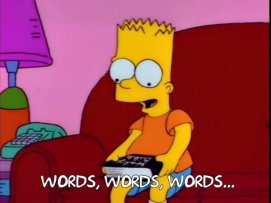So there has been plenty of disagreement lately about the 1619 Project. With apologies to SAGLRROILYBYGTH for harping on the subject, I have one more question to ask. Namely, though I 100% support the big-picture goals of the project, is it fair to say that children are not learning enough about the history of racism in these United States? I think we’re facing a different problem: America’s children are learning plenty about the contributions of African Americans. But the way they are learning it has two big problems.
To be clear as possible, I’ll say it again: I’m a fan and consumer of the 1619 Project. I have used and will continue to use their materials in my history classes. Especially with all the mean-spirited debates recently, people tend to want to turn this literally into a black-and-white issue. It’s not. There are nuances that are worth talking about.
For example, what are we to make of the findings of Stanford’s Sam Wineburg? Wineburg surveyed children and adults about their historical knowledge, and found that the three best-known historical figures (presidents excepted) were Martin Luther King Jr., Rosa Parks, and Harriet Tubman.
Clearly, Americans of all ages are aware of the historical contributions of African Americans. Dr. King is far better-known than figures such as Benjamin Franklin and Henry Ford. Yet two big problems remain. As Nikita Stewart wrote in a 1619 Project essay, children learn about Harriet Tubman in a weird way. Even the history of slavery is somehow twisted into a cheerful, heroic tale. As Stewart put it,
Elementary-school teachers, worried about disturbing children, tell students about the “good” people, like the abolitionists and the black people who escaped to freedom, but leave out the details of why they were protesting or what they were fleeing.
It’s not only slavery. Recently, Mattel released a celebratory Rosa Parks doll. As historian Jeanne Theoharis noted, the history that Mattel told was decidedly lacking. As Theoharis wrote,
Mattel, your blurb on how Rosa Parks “led an ordinary life as a seamstress until an extraordinary moment on Dec. 1” is just plain wrong.
So American children—whether in schools or toy stores—are apparently hearing about prominent African Americans. But the stories they are hearing are folded into a traditional tale of heroic American heroism, triumphing over adversity with everything working out in the end. It is a story of racism defeated and slavery outlawed, not one of continuing racial disparities and racial violence.
 That’s not the only problem with the ways many children are learning the history of race and racism in America. Some children learn a lot, and that’s a problem. As Nikita Stewart explained, she personally had a much better experience in history class.
That’s not the only problem with the ways many children are learning the history of race and racism in America. Some children learn a lot, and that’s a problem. As Nikita Stewart explained, she personally had a much better experience in history class.
I was lucky; my Advanced Placement United States history teacher regularly engaged my nearly all-white class in debate, and there was a clear focus on learning about slavery beyond Tubman, Phillis Wheatley and Frederick Douglass, the people I saw hanging on the bulletin board during Black History Month.
Stewart talked with some of the great history teachers out there who are teaching far beyond their textbooks and traditions, teachers like Tiferet Ani in Maryland who expose their students to a deeper, realer version of America’s history.
As Stewart notes, there ARE a lot of great teachers doing a great job of teaching unadulterated history to their students. Unfortunately, too often those great teachers are clustered at high-resource schools. Too many Advanced Placement, International Baccalaureate, and honors classes are, like Stewart’s, “nearly all-white.” And too many schools in low-resource areas can’t offer the same range of excellent history classes.
So, yes indeed, America is conducting “educational malpractice” when it comes to teaching history. And yes, that malpractice is tied up with America’s history of racism and racial violence. But like all things in America’s schools, the malpractice is not evenly distributed. Richer, whiter students have a better chance at a great history class like Stewart’s. Too many other students don’t.
So what is the problem in America’s history classrooms? It’s not simply an absence of African American history. It comes down to two things: First, the stories about racism end up following the same overly optimistic script as the rest of the history curriculum. Racism is presented as an awkward but impersonal problem, one that has been conquered like smallpox or polio. Second, public-school history classes are not all created equal. Students from wealthier families have a much better chance at learning much better history. And that is indeed “educational malpractice.”



















